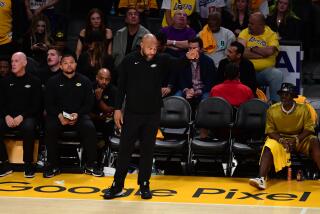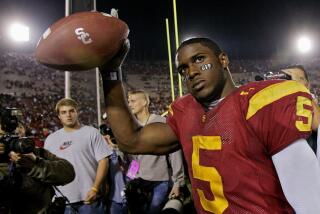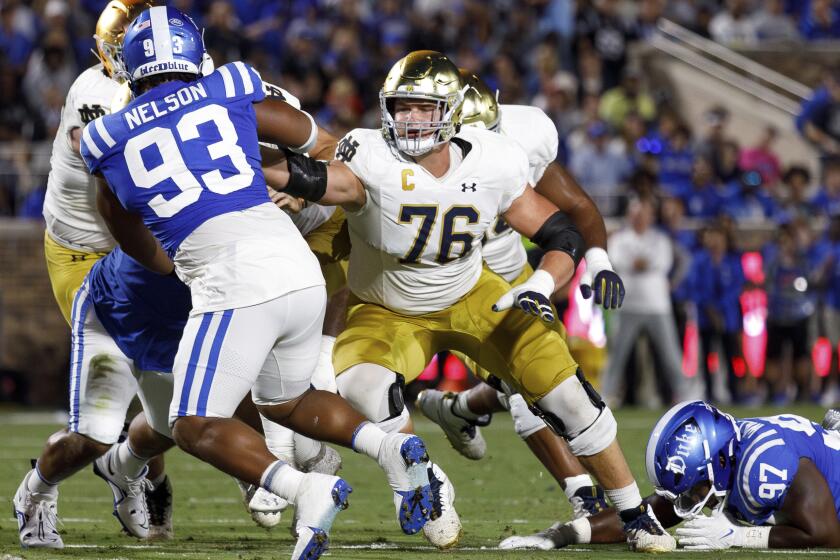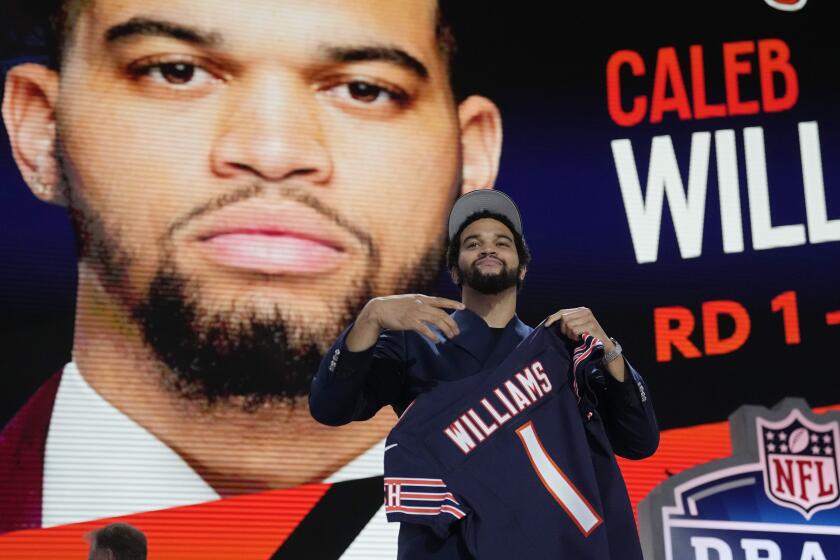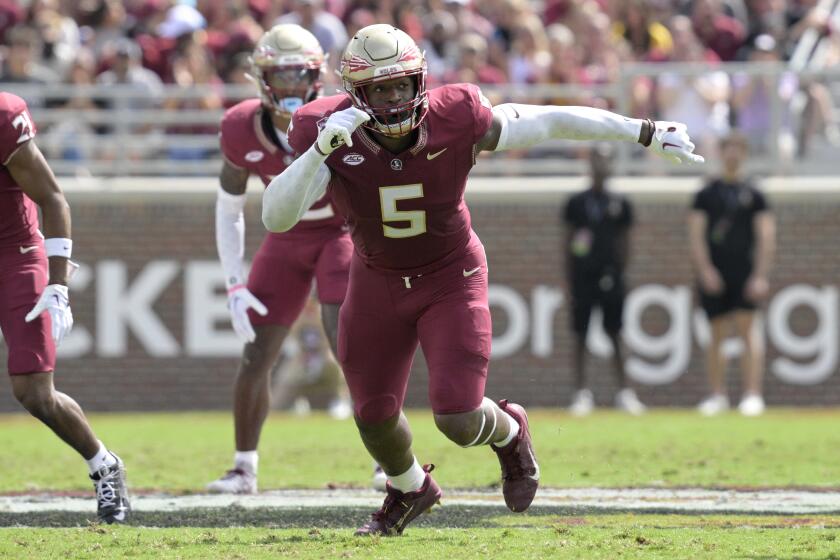Fontana’s NASCAR schedule cut from two races to one
Despite slipping crowds for the two annual NASCAR Sprint Cup Series races at the Auto Club Speedway in Fontana, NASCAR had continued to insist that Southern California — the largest population center where it races — remained a critical market.
That changed Tuesday, when Southern California officially became a lot less critical to big-league stock car racing.
Auto Club Speedway had hosted a February race that followed NASCAR’s crown-jewel Daytona 500 and, starting only last year, its other race was moved to October as one of the 10 Chase for the Cup championship playoff events. That race is Oct. 10 this year.
But NASCAR and track officials, in a major shuffling of the circuit’s 36-race schedule for 2011, confirmed that one of Fontana’s races would move to Kansas Speedway and that Fontana’s remaining race would be dropped from the Chase.
Fontana’s lone race next year is March 27. Phoenix International Raceway will take Fontana’s place as the second stop on the schedule, Chicagoland Speedway will be the leadoff race in the Chase, and Kansas Speedway will have the fourth Chase race. There also will be a new cup race at Kentucky Speedway near Cincinnati in July.
Gillian Zucker, president of Auto Club Speedway, said she believed the troubled Southern California economy was the main factor in NASCAR’s decision and that “I’m intent on winning [the second race] back. This is in no way a criticism of Southern California race fans.”
In the meantime, the speedway will try to recruit other forms of racing to the two-mile, D-shaped oval 50 miles east of Los Angeles, including the Indy-style cars that also raced there when the track opened in 1997. “Everything is on the table,” Zucker said.
NASCAR spokesman Ramsey Poston said “Southern California continues to be a very important market for NASCAR” but given the options available for changes, the new schedule “overall is good for the sport and good for the schedule.”
Poston also noted that changing dates on NASCAR’s long schedule created a domino effect for other tracks, and one reason Fontana’s remaining race fell out of the Chase is that races in the Midwest and Northeast couldn’t be moved to early in the season because of weather.
NASCAR has yet to release its full 2011 schedule, but its plan to move one of Auto Club Speedway’s races to Kansas Speedway was expected. Both tracks are owned by International Speedway Corp. — which is controlled by the France family that also controls NASCAR — and the company sought the switch partly because a new casino is being built next to Kansas Speedway.
Also, attendance at Auto Club Speedway had slipped in recent years, with the cup races drawing 70,000 to 80,000 compared with 90,000 to 100,000 shortly after the track began hosting two cup races annually in 2004.
While the crowds remain among the largest for a one-day Southland sporting event, Auto Club Speedway has 92,000 grandstand seats, and not filling all of them fed the notion that the region wouldn’t support two races a year.
Besides the economy, other factors were blamed. The track’s races were often plagued by bad weather, especially when its second race was on Labor Day weekend and temperatures soared. Some reasoned that its February race was hurt when it ran on the same day as the Academy Awards, and by preceding the cup race in Las Vegas, a destination many fans seemed to prefer.
The plethora of entertainment choices available to Southern Californians also was cited. So was the quality of the racing at the Fontana track, where the cars often became strung out and passing was sparse.
Zucker’s marketing efforts also were criticized by some who contended that she was too focused on selling NASCAR to a Hollywood audience. The effort including having such stars as Kelsey Grammer and Christian Slater attends races, but it didn’t result in sellouts.
Still, said David Carter, executive director of USC’s Sports Business Institute, “I don’t think it’s appropriate to lay it all at the doorstep of the Auto Club Speedway,” and that “not to try to take advantage of our entertainment culture would have been a marketing oversight.”
Carter said the poor economy was a major culprit, especially after NASCAR a few years ago made the “strategic decision to really expand its imprint at a time when the business was going very well. Now they find themselves, like many businesses, retrenching.”
Also, International Speedway is a publicly held company “and the stark reality is that ISC is responsible to its shareholders” to pursue the most profitable racing, he said.
james.peltz@latimes.com
More to Read
Get our high school sports newsletter
Prep Rally is devoted to the SoCal high school sports experience, bringing you scores, stories and a behind-the-scenes look at what makes prep sports so popular.
You may occasionally receive promotional content from the Los Angeles Times.

